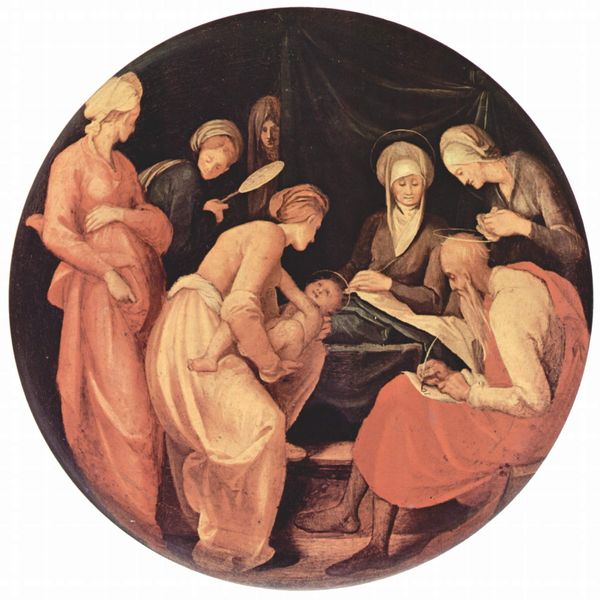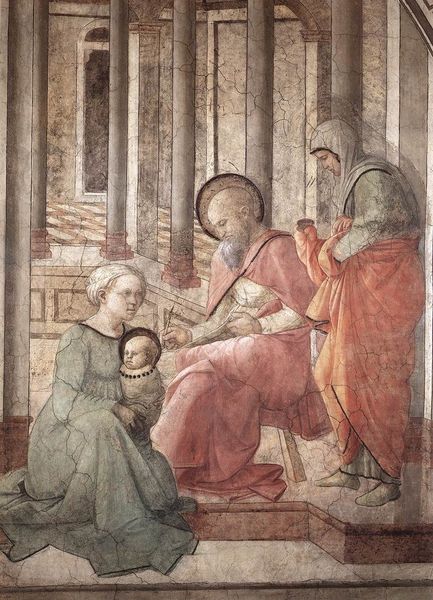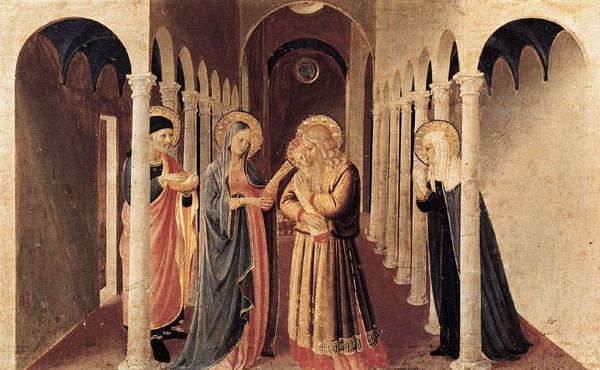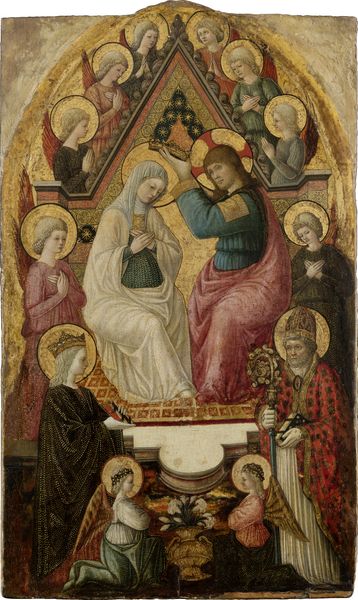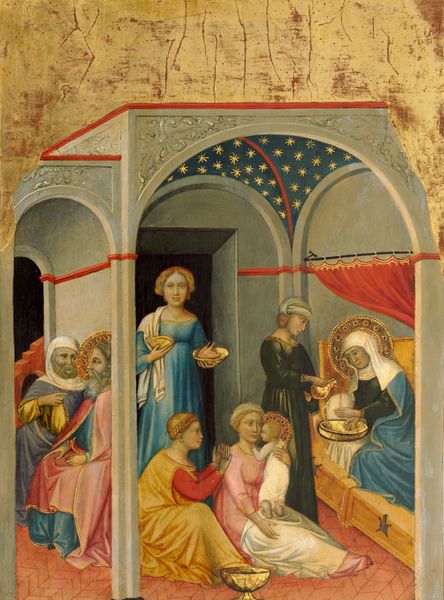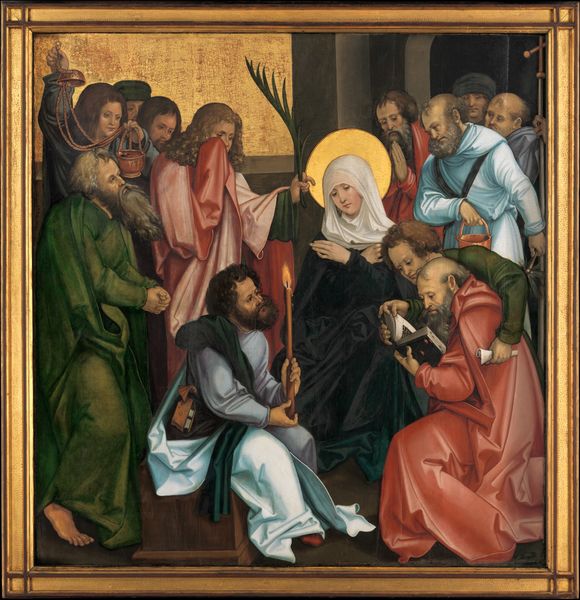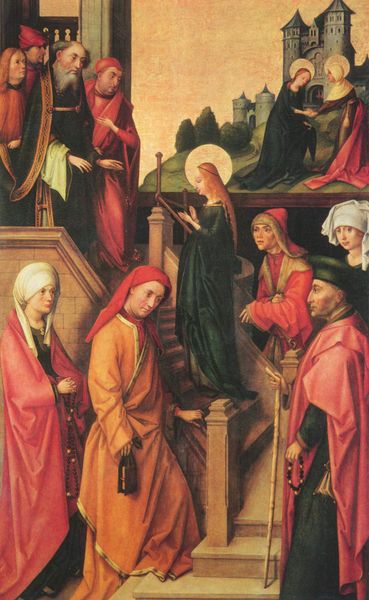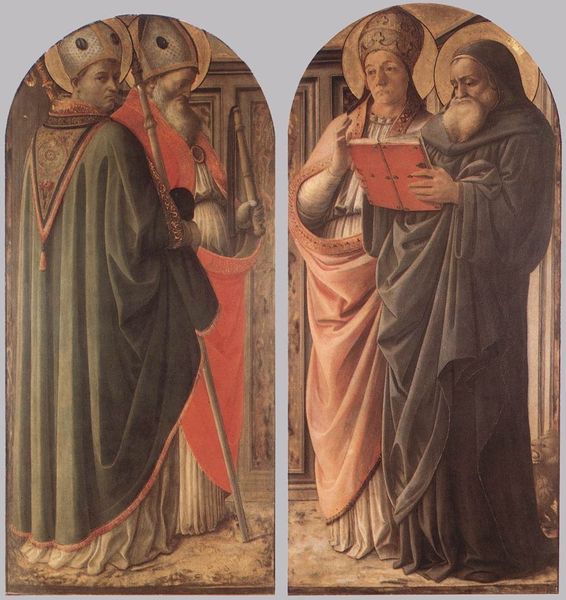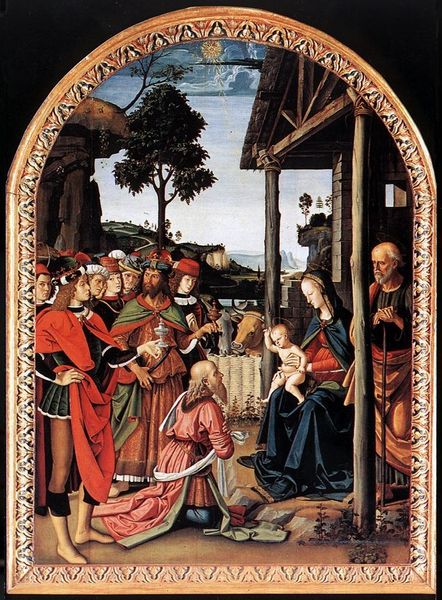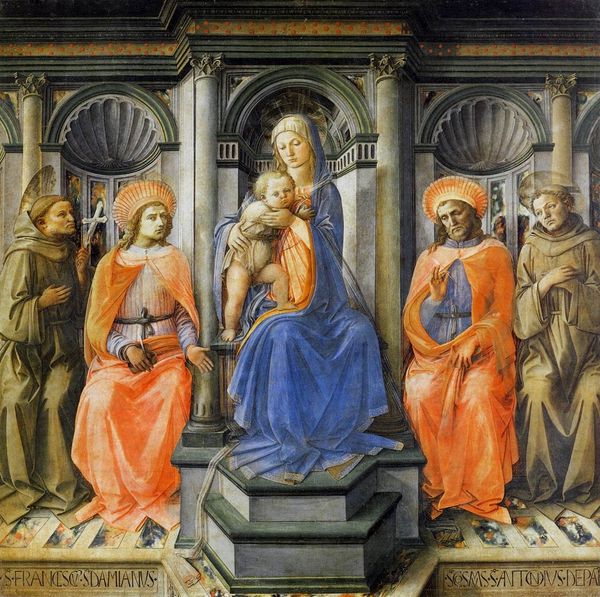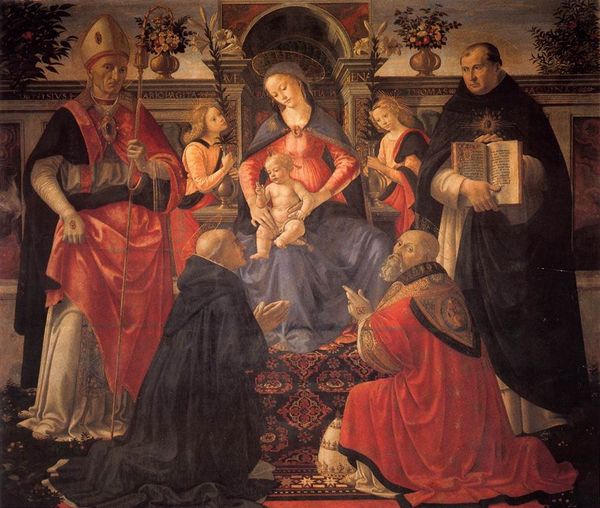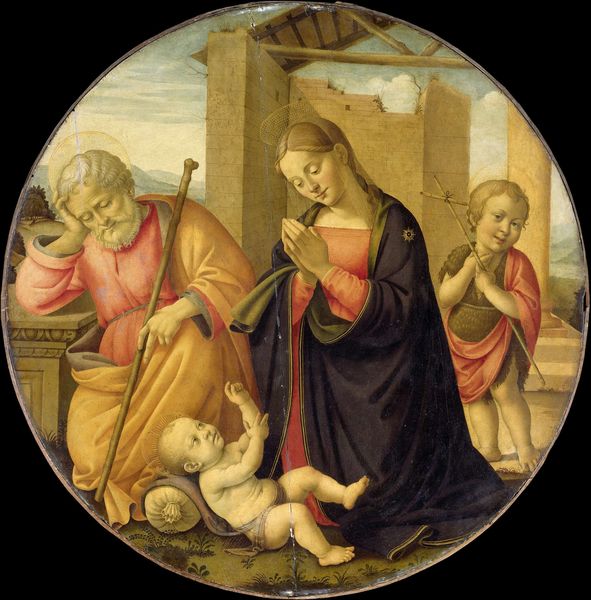
panel, painting, oil-paint
#
portrait
#
panel
#
painting
#
oil-paint
#
sculpture
#
charcoal drawing
#
figuration
#
oil painting
#
christianity
#
history-painting
#
italian-renaissance
#
early-renaissance
#
virgin-mary
#
angel
#
christ
Copyright: Public domain
Curator: Here we have Filippo Lippi’s "The Virgin Appears to St. Bernard" from 1447, an oil on panel painting currently residing in the National Gallery in London. Editor: My immediate impression is one of muted reverence, like hushed whispers in a sacred space. The ochre tones lend a dreamlike quality, don't they? Curator: Indeed. Lippi masterfully uses this palette to construct a potent intersection of the earthly and the divine. We see Saint Bernard, deeply engrossed in his studies, interrupted by the celestial apparition of the Virgin Mary, flanked by angels. The scene speaks to the importance of Marian devotion within the social fabric of the time. Editor: What strikes me is the emphasis on the physical books themselves, piled on the desk alongside St. Bernard’s own massive tome. The means of textual production—the labor of copying, the cost of materials—speaks volumes about access to knowledge in that era. Curator: Absolutely, and the positioning of the Virgin, slightly elevated and surrounded by divine figures, reinforces the hierarchical structures of the Church and of gender in the 15th century. Consider also that the figure of St. Bernard himself had immense sociopolitical power at this time, so to see him here is really a signal about the cultural aspirations embedded in this painting. Editor: Right. It’s not just a depiction of a miraculous event; it's a carefully constructed representation using paint and panel that serves a larger ideological function. Who commissioned it, and how did the material choices—oil on panel instead of fresco, say—affect its accessibility and reception? Curator: Those are crucial questions. It highlights the intersection of faith, patronage, and artistic agency in the Early Renaissance, and allows us to further investigate the nuances of that interplay and who could commission what and why. Editor: Looking closely at the folds of St. Bernard's robe, there's something about the materiality, the weight and texture rendered in paint. And this detail, next to Mary's looming dark robe shows the social distinction of a monastic versus her own other worldly depiction. Curator: Precisely, observing Lippi's choices really unearths layers of significance. The Virgin’s sudden appearance breaks up his life and work through the sudden imposition of the miraculous! Editor: A striking interplay of power, craft, and devotion. This really opens the doors to a complex discussion about labor and faith, as well as their influence and representations at the time. Curator: Exactly, seeing those intricate intersections reminds me about the power art holds to teach us so much more.
Comments
No comments
Be the first to comment and join the conversation on the ultimate creative platform.
